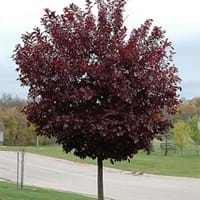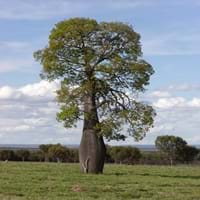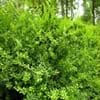Life Span
Perennial
Biennial
Origin
North America, United States, Northeastern United States, Mid-Atlantic United States, Southeastern United States, North-Central United States, South-Central United States, Texas
Australia
Types
not available
Narrowleaf Bottle Tree, Pink Flame Tree, Rusty Kurrajong
Number of Varieties
Not Available
Habitat
Boggy areas, Fens, Fields, meadows, Swamps, Woodlands
Subtropical climates, Subtropical forests
USDA Hardiness Zone
4-9
9-11
Sunset Zone
1a, 1b, 2a, 2b, 3a, 3b, 4, 5, 6, 7
H1, H2, 15, 16, 17, 18, 19, 20, 21, 22, 23, 24
Habit
Thicket/Colonizing
Upright/Erect
Flower Color
Not Available
Crimson, Orange Red
Flower Color Modifier
Not Available
Bicolor
Fruit Color
Red
Dark Red, Sienna, Chocolate
Leaf Color in Spring
Not Available
Not Available
Leaf Color in Summer
Not Available
Red, Green, Light Green
Leaf Color in Fall
Not Available
Green
Leaf Color in Winter
Not Available
Green
Leaf Shape
Oblovate
Lobed
Plant Season
Spring, Fall, Winter
Spring, Summer
Sunlight
Full Sun, Partial Sun
Full Sun, Partial Sun
Type of Soil
Clay, Loam
Loam, Sand
The pH of Soil
Acidic, Neutral, Alkaline
Acidic, Neutral
Soil Drainage
Average
Well drained
Bloom Time
Late Spring
Early Spring, Spring, Late Spring, Early Summer
Tolerances
Not Available
Pollution, Drought
Where to Plant?
Ground, Pot
Ground
How to Plant?
Divison, Seedlings
Grafting, Seedlings
Plant Maintenance
Medium
Medium
Watering Requirements
Keep the ground moist but not water-logged
Average Water Needs, Do Not over Water, Requires regular watering
In Summer
Lots of watering
Lots of watering
In Spring
Moderate
Moderate
In Winter
Average Water
Average Water
Soil pH
Acidic, Neutral, Alkaline
Acidic, Neutral
Soil Type
Clay, Loam
Loam, Sand
Soil Drainage Capacity
Average
Well drained
Sun Exposure
Full Sun, Partial Sun
Full Sun, Partial Sun
Pruning
Prune after flowering, Prune in early spring, Remove damaged leaves, Remove dead branches, Remove dead leaves
Remove branches, Remove damaged leaves, Remove dead branches, Remove dead leaves, Remove dead or diseased plant parts, Remove deadheads
Fertilizers
All-Purpose Liquid Fertilizer, Compost, Fertilize every year, Mulch, Nitrogen
Nitrogen
Pests and Diseases
Aphids, Apple Maggot, Fall Webworm, Red blotch, Scale
Red blotch
Plant Tolerance
Not Available
Drought, Pollution
Flower Petal Number
Not Available
Single
Foliage Texture
Not Available
Medium
Foliage Sheen
Not Available
Glossy
Attracts
Birds
Hummingbirds
Allergy
Not Available
allergic reaction, Skin irritation
Aesthetic Uses
Showy Purposes
Showy Purposes
Beauty Benefits
Not Available
Not Available
Environmental Uses
Air purification
Air purification, Nesting sites for birds, Shadow Tree, Wildlife
Medicinal Uses
Not Available
Not Available
Part of Plant Used
Fruits
Root, Seeds
Other Uses
Used As Food, Used as Ornamental plant
Used as Ornamental plant
Used As Indoor Plant
No
No
Used As Outdoor Plant
Yes
Yes
Garden Design
Cutflower, Mixed Border, Screening, Wind Break
Feature Plant, Shade Trees, Street Trees, Tropical
Botanical Name
ARONIA arbutifolia
BRACHYCHITON rupestris
Common Name
Red Chokeberry
Australian Flame Tree, Flame Bottle Tree, Illawarra Flame Tree
In Hindi
लाल Chokeberry
बोतल ट्री
In German
Rote Apfelbeere
Flaschenbaum
In French
Red Chokeberry
Bouteille Arbre
In Spanish
rojo Chokeberry
Árbol de la botella
In Greek
κόκκινο Chokeberry
Μπουκάλι Δέντρο
In Portuguese
Red Chokeberry
Bottle Tree
In Polish
Red aronii
Butelka Drzewo
In Latin
arbutifolia
Utrem ligno
Phylum
Magnoliophyta
Magnoliophyta
Class
Magnoliopsida
Magnoliopsida
Family
Rosaceae
Sterculiaceae
Genus
Aronia
brachychiton
Clade
Angiosperms, Eudicots, Rosids
Angiosperms, Eudicots, Rosids
Tribe
Not Available
Sterculieae
Subfamily
Not Available
Sterculioideae
Number of Species
Not Available
Season and Care of Red Chokeberry and Bottle Tree
Season and care of Red Chokeberry and Bottle Tree is important to know. While considering everything about Red Chokeberry and Bottle Tree Care, growing season is an essential factor. Red Chokeberry season is Spring, Fall and Winter and Bottle Tree season is Spring, Fall and Winter. The type of soil for Red Chokeberry is Clay, Loam and for Bottle Tree is Loam, Sand while the PH of soil for Red Chokeberry is Acidic, Neutral, Alkaline and for Bottle Tree is Acidic, Neutral.
Red Chokeberry and Bottle Tree Physical Information
Red Chokeberry and Bottle Tree physical information is very important for comparison. Red Chokeberry height is 180.00 cm and width 12.70 cm whereas Bottle Tree height is 2,743.20 cm and width 1,500.00 cm. The color specification of Red Chokeberry and Bottle Tree are as follows:
Red Chokeberry flower color: Not Available
Red Chokeberry leaf color: Not Available
Bottle Tree flower color: Crimson and Orange Red
- Bottle Tree leaf color: Not Available
Care of Red Chokeberry and Bottle Tree
Care of Red Chokeberry and Bottle Tree include pruning, fertilizers, watering etc. Red Chokeberry pruning is done Prune after flowering, Prune in early spring, Remove damaged leaves, Remove dead branches and Remove dead leaves and Bottle Tree pruning is done Remove branches, Remove damaged leaves, Remove dead branches, Remove dead leaves, Remove dead or diseased plant parts and Remove deadheads. In summer Red Chokeberry needs Lots of watering and in winter, it needs Average Water. Whereas, in summer Bottle Tree needs Lots of watering and in winter, it needs Average Water.





